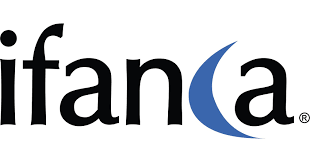
Philippines pharma to enter halal market
(Photo credit: Joyfull/Shutterstock.com)
The Philippines has gained an enviable position as a non-Muslim player in the $3.2 trillion-dollar global halal market, a foothold that could be a boon for its pharmaceutical and cosmetics sectors.
The sovereign island country in Southeast Asia has become the first Muslim-minority nation eligible to adopt halal harmonization standards approved by the Organisation of Islamic Cooperation, the international bloc representing all 57 of the world’s Muslim countries.
The Philippines pharmaceutical industry is projected to grow to $8 billion over the next five years, according to MarketOptimizer.org research. The Philippines also has the third-largest pharma market among the countries in the Association of Southeast Asian Nations, after Indonesia and Thailand.
The vote of confidence from the OIC means the Philippines economy can capitalize on a growing demand for quality and Muslim-friendly pharmaceuticals and cosmetics, says Abdulrahmn Lanzig, President and CEO of the Islamic Da’wah Council of the Philippines.
There’s another potential draw for buying from the Philippines — price.
“The Philippines, being a country that has cheaper work or labor costs, can produce cheaper products and sell to other countries like Malaysia and Indonesia,” Lanzig said. “They need products, foods, pharmaceuticals which are acceptable to them as halal-certified, and almost all the companies here in the Philippines are now availing of halal certification processes.”
About 5 percent of the Philippines population is Muslim, according to national surveys.
Lanzig hopes halal verification labels from the Philippines will become synonymous with trusted quality, attracting more drug-makers and cosmetics firms to seek out certification from the Philippines.
“In the Philippines, most of the pharmaceuticals are imported, but we’re requested to certify where the manufacturers of those pharmaceuticals are being done,” Lanzig said from Manila.
“We have to go there and validate the sources of materials, and especially those capsules and what’s contained in them.”
The fact that many halal food products are also fortified by vitamins means it becomes even more critical for Philippines halal inspectors to trace ingredients back to the original labs.
Lanzig also notes that animal-derived ingredients are often found in some cosmetics products. Some shaving creams, for example, may contain tallow.
WHO WILL BE NEXT TO HARMONIZE?
Mohammad Shukri Abdullah, CEO of the World Halal Summit Secretariat, believes a uniform standard that satisfies different schools of Islamic thought will go a long way towards attracting market participants in the pharma sector and other industries.
"It's obvious that the difference in opinions on what is constituted as halal has detrimental effects on international trade despite its rising demands," Abdullah said.
Ultimately, he believes halal harmonization would lead to a natural expansion of the halal sector, paving the way for better economic relations among countries.
"It's a smart move by the Philippines as it opens opportunities for them to penetrate not just the 60 percent Muslim population in the ASEAN region, but also the 57 member states of the OIC," Abdullah said.
As for which nations could be next to follow the Philippines model?
"Personally, I believe Japan and Korea will adopt the unified standard mainly to strengthen trade collaborations already in place between these countries and the Middle East in other sectors," he said, adding that "China is forging ahead" with strengthening halal trade opportunities.
With 1.65 billion Muslims around the world and a projected Muslim population of 2.2 billion by the year 2030, Abdullah says the enormous growth potential in halal is difficult to ignore.
"Needless to say, everyone wants a slice of the pie," he says.
© Copyright SalaamGateway.com 2015

Matt Kwong